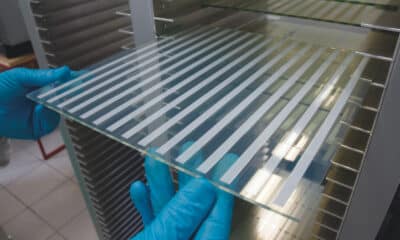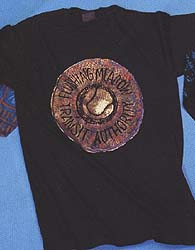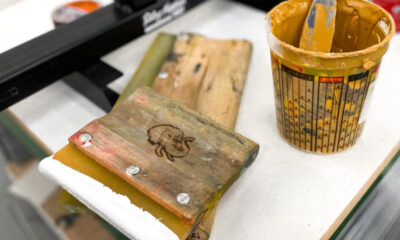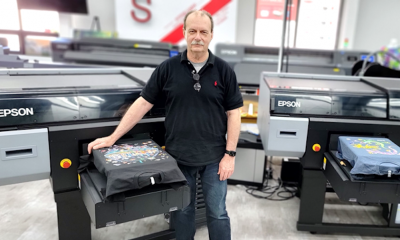A few years ago, I decided to improve the results I was getting when printing water-based inks on dark garments. We had a toe in the water, so to speak. We were printing dark fabric panels with water-based inks. But, we were ready for the big plunge into higher-quality, water-based printing. Unfortunately, the amount of information the industry had about water-based inks was minimal, making it rather hard for us to learn about these inks quickly.
A few years ago, I decided to improve the results I was getting when printing water-based inks on dark garments. We had a toe in the water, so to speak. We were printing dark fabric panels with water-based inks. But, we were ready for the big plunge into higher-quality, water-based printing. Unfortunately, the amount of information the industry had about water-based inks was minimal, making it rather hard for us to learn about these inks quickly. The forum for my information search was the Screen Printing Association International (SPAI) annual convention (SPAI is now called the Screen Printing and Graphic Imaging Association or SGIA). I stopped at every booth promoting textile inks and asked the same question: "How do I improve my printing on dark fabrics with water-based inks?" The first response from most (maybe all) was, "You can’t use water-based ink on dark garments effectively." After I explained to each salesperson that we were already printing multicolor designs on dark, 50/50 fabric panels with water-based inks, the response changed to, "Well, keep doing it the way you are now." The industry has taken leaps since that day and since the days of my home-brewed, in-house concoctions of pigment concentrates mixed with white water-based ink. Efforts of the ink manufacturers have resulted in "blockout" bases and ready-for-use water-based inks specifically formulated for use on dark fabrics. Don’t be confused. We are discussing high-opaque water-based inks, not discharge inks. Discharge inks are water-based. However, printing them is an entirely different process. Choosing Water-Based Inks My choice to use water-based inks on dark fabrics came from a manufacturing standpoint. I print, as one of our company specialties, fabric panels that are then cut and sewn into finished garments. Water-based ink lends itself better to the process than plastisol since we actually cut and sew through the print area. The thin layer of water-based ink is easier to sew through; this allows smooth production and a smooth manufacturing process. For others, the decision to use water-based inks is a result of the following two advantages these inks provide: • First, the cost of water-based ink is substantially less than standard, out-of-the-can plastisols. • Second, water-based inks allow a soft hand. The final ink film is approximately one fifth the thickness of a similar layer of plastisol. While plastisol is 100% solids, water-based inks are in the area of 20% solids. As the 80% water in the ink is removed during the drying process, the 20%-solid content remains on he garment. The final dried, thinner ink film translates to a softer hand for your finished print. The Plastisol Comparison Here’s the question you’ve been wanting to ask: Will my finished product look the same to my customer and to me when I switch from plastisol to water-based ink? The answer is yes, and it’s no. Yes, the water-based ink will be totally opaque, just as your plastisol is when applied properly. The "blockout" base used in high-opaque water-based inks of today is what separates the new opaque inks from the transparent water-based inks with which we are most familiar. In this respect, water-based and plastisol inks are similar. And no, there will be a difference in the look of the final product. The hand you get with water-based inks will be softer since there is a lower solids level than in plastisol. And for the same reason, the colors will be slightly muted (fewer solids and no plastic or PVC) in comparison to that more glossy plastisol effect.

 Case Studies2 months ago
Case Studies2 months ago
 Art, Ad, or Alchemy2 months ago
Art, Ad, or Alchemy2 months ago
 Andy MacDougall2 months ago
Andy MacDougall2 months ago
 Columns3 weeks ago
Columns3 weeks ago
 Editor's Note2 weeks ago
Editor's Note2 weeks ago
 Thomas Trimingham2 months ago
Thomas Trimingham2 months ago
 Marshall Atkinson2 weeks ago
Marshall Atkinson2 weeks ago
 News & Trends1 month ago
News & Trends1 month ago








